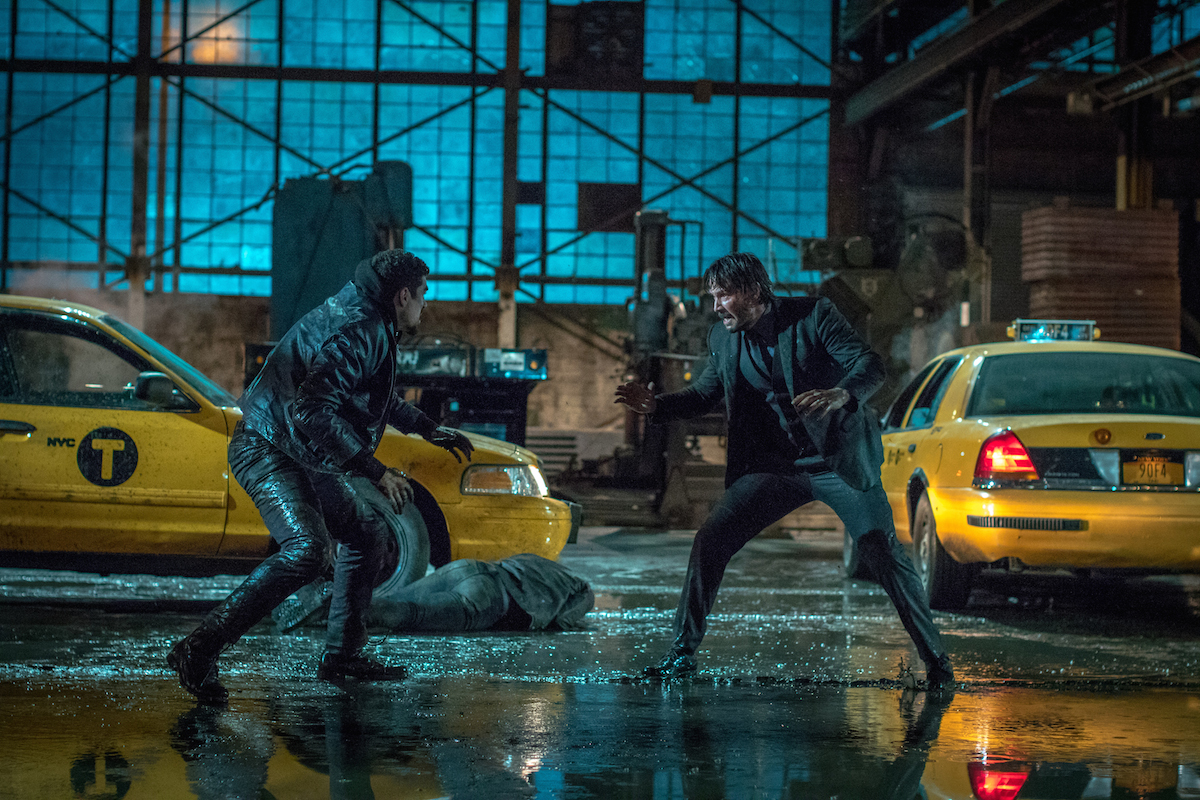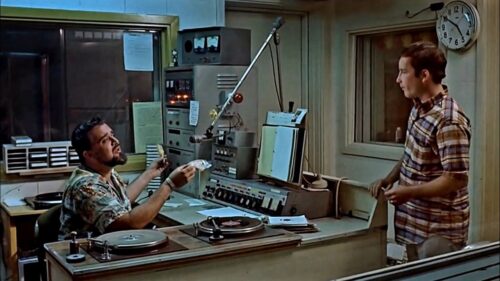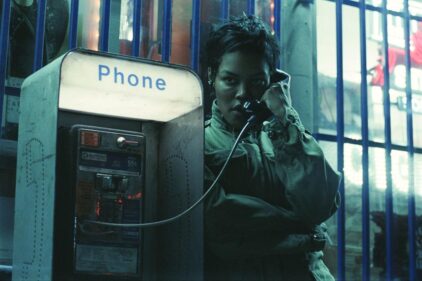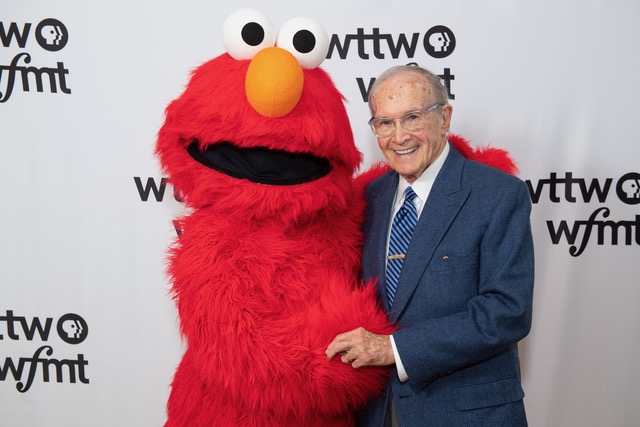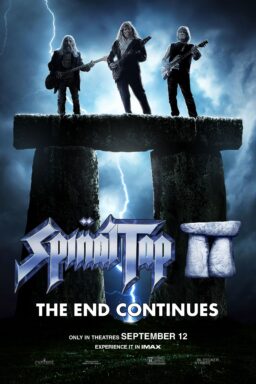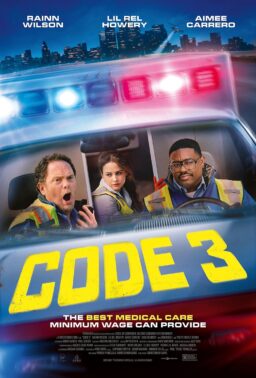Toward the end of “John Wick: Chapter Two,” a supporting character states that the hero, an emotionally tortured assassin, is addicted to vengeance. Well, yeah—now that you mention it; he’s only been killing people by the bushel for nearly four hours’ of screen time, first to avenge the murder of his dog and the theft of his car, then to redress a betrayal by a crime lord who helped him in the first film and now calls in a favor that Wick can’t refuse.
But the act of mentioning Wick’s revenge addiction makes it funny, and it turns what might’ve been a somewhat full-of-itself sequel into something faintly mysterious, at once kidding and not-kidding. That’s the Wick trick in a nutshell: making a combination drive-in exploitation flick and arthouse deconstruction of same, while handing academics literary and aesthetic cues like trays of canapes at one of those fancy parties that the hero always transforms into a bloodbath. This sequel to the sleeper hit “John Wick” is the kind of movie that turns subtext into text constantly, blatantly yet playfully, stopping just short of winking at the audience (although on at least one occasion a character actually does wink, at such an angle that the gesture nearly seems directed at us). As Wick gets drawn out of retirement again, coerced into taking one last job and then double crossed and set up as a target, others compare him to the Grim Reaper, describe him as the devil’s emissary and the boogeyman, and contextualize him in mythology. At one point another retired assassin who now tends pigeons on a roof—a la Forest Whitaker in Jim Jarmusch’s beguiling yet inexplicably almost-forgotten Zen action flick “Ghost Dog: The Way of the Samurai“—gives Wick a gun with exactly seven bullets before leading him to an “Angel Heart”-looking elevator and telling him he’s starting his descent into hell. (The retired assassin is played by Sir Laurence Fishburne, star Keanu Reeves’ mentor from the “Matrix” films, so of course he savors every line like brandy.)
Director Chad Stahleski, writer Derek Kolstad and star/producer Reeves worked together on the first “John Wick” and wisely decided not to bust up a winning team on the sequel. Where the original was lean, even minimalist, this one is a bit more sprawling, savoring character moments and atmosphere and filling in details that were lightly sketched in the first film (such as the underworld’s economy of codes and favors, and the Switzerland-like role played within it by the Continental, envisioned here as an international network of hipster hotels/professional homebases-for-hire—basically Soho House for thieves and killers). It’s a world of hidden identities and motives; seemingly anyone around Wick could be an assassin, including a subway musician and a homeless beggar. It’s also a world of ethnic and racial stereotypes, splitting the difference between a hardcore-violent videogame (Grand Theft Auto, probably) and a spaghetti Western (check out the mournful quasi-Spanish guitar that chimes in on the soundtrack). The Wick series’ guy-movieness is acknowledged rather gleefully in a sequence that crosscuts between a suddenly homeless Wick acquiring a new suit (with bulletproof lining) and a new arsenal of guns. The movie pays similarly close attention to the texture of Wick’s suits and shoes and the gleaming metal surfaces of the pistols, rifle and shotgun he tries out under the watchful eye of a weapons master known as The Sommelier (Peter Serafinowicz). No less than a film by Michael Mann (or Nancy Meyers) this is a movie about the love of stuff, but also the idea of one’s stuff representing oneself.
After a laborious setup that pays a bit more attention to the rules of Wick’s nearly all-criminal universe than the movie probably needed, “John Wick: Chapter Two” stages a second half that’s worth the wait. The final action sequence is set in the Metropolitan Museum of Art, where Wick shoots, stabs and otherwise dispatches an army of would-be assassins trying to collect the bounty on his head. When Wick fires bullets into his opponents’ torsos, arms, legs and skulls at point-blank range, their blood hits the museum’s white walls, creating Jackson Pollock splatter effects, but the blood never actually impacts a canvas, and no sculptures or paintings are penetrated by bullets. (No fine art was harmed during the making of this motion picture.) It isn’t until the end of the film, a hall-of-mirrors showdown that must be the one millionth finale to rip off Orson Welles’ “The Lady from Shanghai,” that Wick and his enemies start damaging the museum’s contents, but as a recording that plays over the public address system keeps reminding us, this particular exhibition is about “the nature of the self,” so of course they’d have to mess stuff up. Postmodernism and all that. Wick even hides within a mirror and seems to emerge from one, and of course combatants shatter mirrors into glittering powder and crash through them as if they were curtains.
The combination of martial arts and point-blank gunplay, described by others as Gun Fu, becomes Art Fu here. The flesh-shredding brutality enacted by Wick and his foes becomes pleasingly abstract the way the filmmakers stage and (ahem) execute it. The very first chase scene kicks off with footage of a Buster Keaton silent picture being projected on the side of a building, then pans down to reveal a motorcycle goon sliding into frame legs-first, his toppled bike following close behind. It’s cool but ridiculous, and quite self-aware. Immediately, we get it: everything we’re about to see onscreen will have a certain emotional reality (keyed into Wick’s ongoing distress over his late wife and his inability to escape his underworld commitments), but the violence, however bloody, will be as figurative as what you’d seen in an old silent film or cartoon—the kind where one character chases another while firing bullets directly into his butt.
Reeves and costar Common, playing the bodyguard of one of Wick’s victims, even have a moment in a bar reminiscent of those old Warner Bros. cartoons where a wolf and a sheepdog battle each other during regular business hours, then punch in and out at the same time clock: “Mornin’ Ralph.” “Mornin’ Sam.” Everything these badasses do to each other is out of professional obligation, except for providing a quick death: that’s a professional courtesy. Their fight on a subway car is probably the best dust-up of its kind since Captain America made short work of an elevator full of would-be killers in “Captain America: The Winter Soldier,” and the frenzied awkwardness of the performers’ movements here (as elsewhere) makes the preposterous awesomeness of their moves more believable. They’re nearly superhuman, but they slip and fall, get tired, bleed. Wick gets hit by cars several times at high speed, gets stabbed more than once, and by the end of the movie his face looks like the cracked faceplate of his cell phone, but he keeps going, like the Tasmanian Devil or the Road Runner, but with a haunted soul.

